Class Mammalia
Order Carnivora
Family Mustelidae
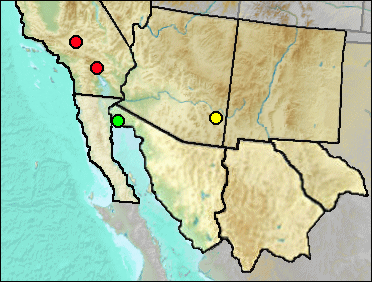
Sites.
Late Blancan: San Simon Fauna (Morgan and White 2005).
Irvingtonian: El Golfo (Croxen et al. 2007: gen. cf.).
Rancholabrean: Piute Ponds (Jefferson 2014).
Late Wisconsin: Mountain View Country Club (Jefferson 2014).
Literature. Croxen et al. 2007; Jefferson 2014; Morgan and Harris 2015; Morgan and White 2005.
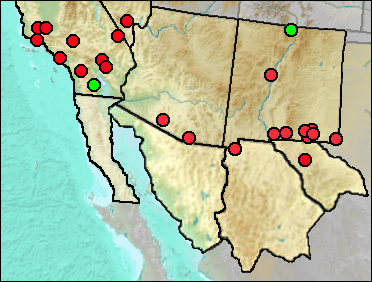
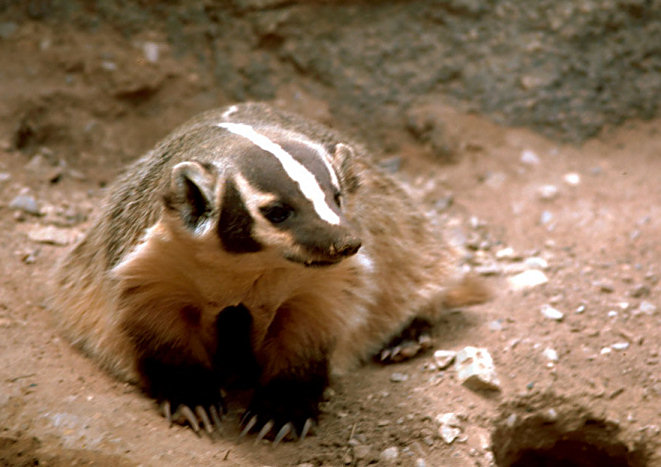
Fig. 1. Taxidea taxus. Photograph of a New Mexican American Badger by Gary M. Stolz, courtesy of the U.S. Fish & Wildlife Service.
A single North American species occurs in the Irvingtonian, Rancholabrean, and Holocene. This large mustelid is widely distributed in both the present and in the Pleistocene.
Ecologically, presence of Taxidea tells us little. This taxon is distributed from low desert to timberline. The only requirements seem to be presence of suitable prey and soil conditions that make it possible to dig the prey animals from their burrows.
Morphologically, the American Badger retains the relatively short legs of other members of the weasel family, but goes in an entirely different direction in terms of body shape and limb massiveness. The body is stocky and the forelimbs with thick bones and armed with huge claws. The hind limbs are more in proportion to the size of the animal.
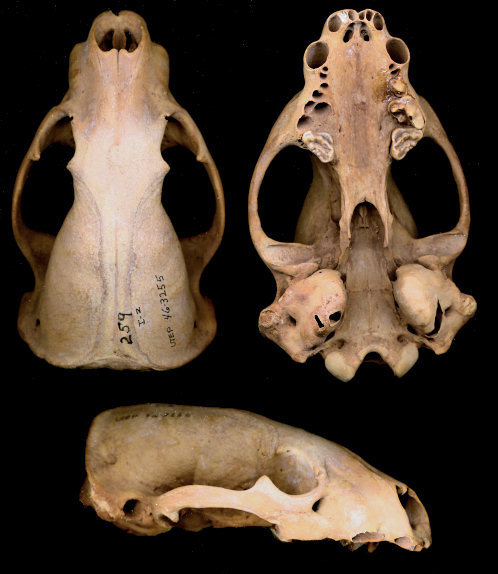
Fig. 2. Dorsal, ventral, and lateral views of a fossil skull of Taxidea taxus. Skull from Isleta Cave No. 2 (UTEP 46-3255). Skull is 127 mm long.
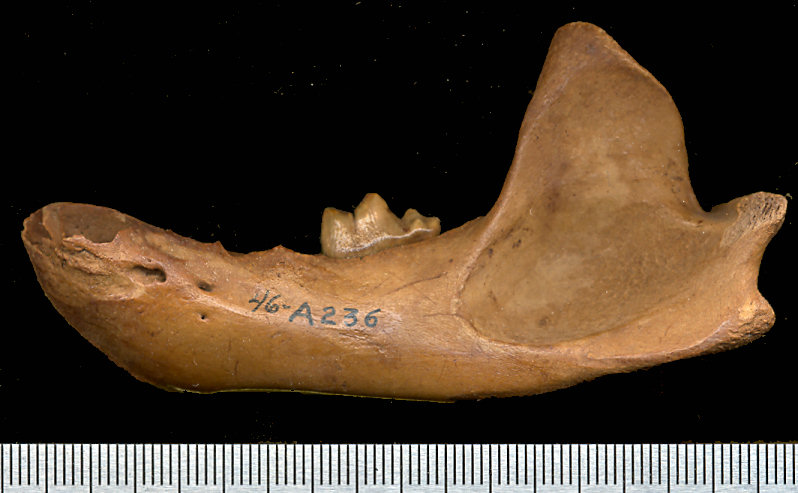
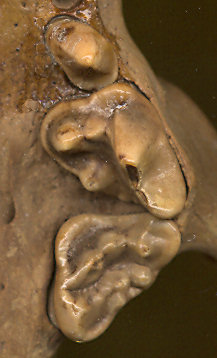
Fig. 3. Left dentary of Taxidea taxus with m1 (UTEP 46-236.1). Isleta Cave No. 2. Scale in mm. Fig. 4. Close-up of slightly worn left P3, P4, and M1 of Taxidea taxus. Same individual as in Fig. 2.
Sites.
Irvingtonian: Anza-Borrego (Murray 2008).
Medial Irvingtonian: SAM Cave (Rogers et al. 2000).
Rancholabrean: Campbell Hill (Jefferson 1991b); Centennial Parkway, Las Vegas Valley (Jefferson et al. 2015); Jal (Morgan and Lucas 2005); Papago Springs Cave (Skinner 1942); Pinto Basin (Jefferson 2014: Cf. gen. et sp.); Tule Springs (Springer et al. 2005).
Wisconsin: Carpinteria (Wilson 1933: cf.).
Early/Early-Mid Wisconsin: Rm Vanishing Floor (Harris 1993c: cf. genus).
Mid Wisconsin: McKittrick (Schultz 1937); Pendejo Cave (Harris 2003); U-Bar Cave (Harris 1987).
Mid Wisconsin-Holocene: Shelter Cave (Harris 1993c).
Mid/Late Wisconsin: Animal Fair (Harris 1993c); Big Manhole Cave (Harris 1993c); Dark Canyon Cave (Tebedge 1988); Diamond Valley (Springer et al. 2009); Rancho La Brea (Stock and Harris).
Mid/Late Wisconsin/Holocene: Sierra Diablo Cave (UTEP).
Late Wisconsin: Circus Route (Harris 1993c); Maricopa (Jefferson 1991b); Pendejo Cave (Harris 2003); U-Bar Cave 14-15 ka (Harris 1989); U-Bar Cave 15-18 ka (Harris 1989); Ventana Cave (Colbert 1950).
Late Wisconsin/Holocene: Burnet Cave (Schultz and Howard 1935); Conkling Cavern (Conkling 1932); Isleta Cave No. 2 (Harris 1993c); Kokoweef Cave (Reynolds, Reynolds, et al. 1991); Newberry Cave (Jefferson 1991b); Schuiling Cave (Jefferson 1991b: cf.).
Literature.
Colbert 1950; Conkling 1932; Harris 1987, 1989; 1993c, 2003; Jefferson 1991b; Jefferson et al. 2015; Morgan and Lucas 2005; Morgan and White 2005; Murray 2008; Reynolds, Reynolds, et al. 1991; Rogers et al. 2000; Schultz 1937; Schultz and Howard 1935; Skinner 1942; Springer et al. 2005, 2009); Stock and Harris 1992); Tebedge 1988; Wilson 1933).
Last Update: 1 Feb 2016